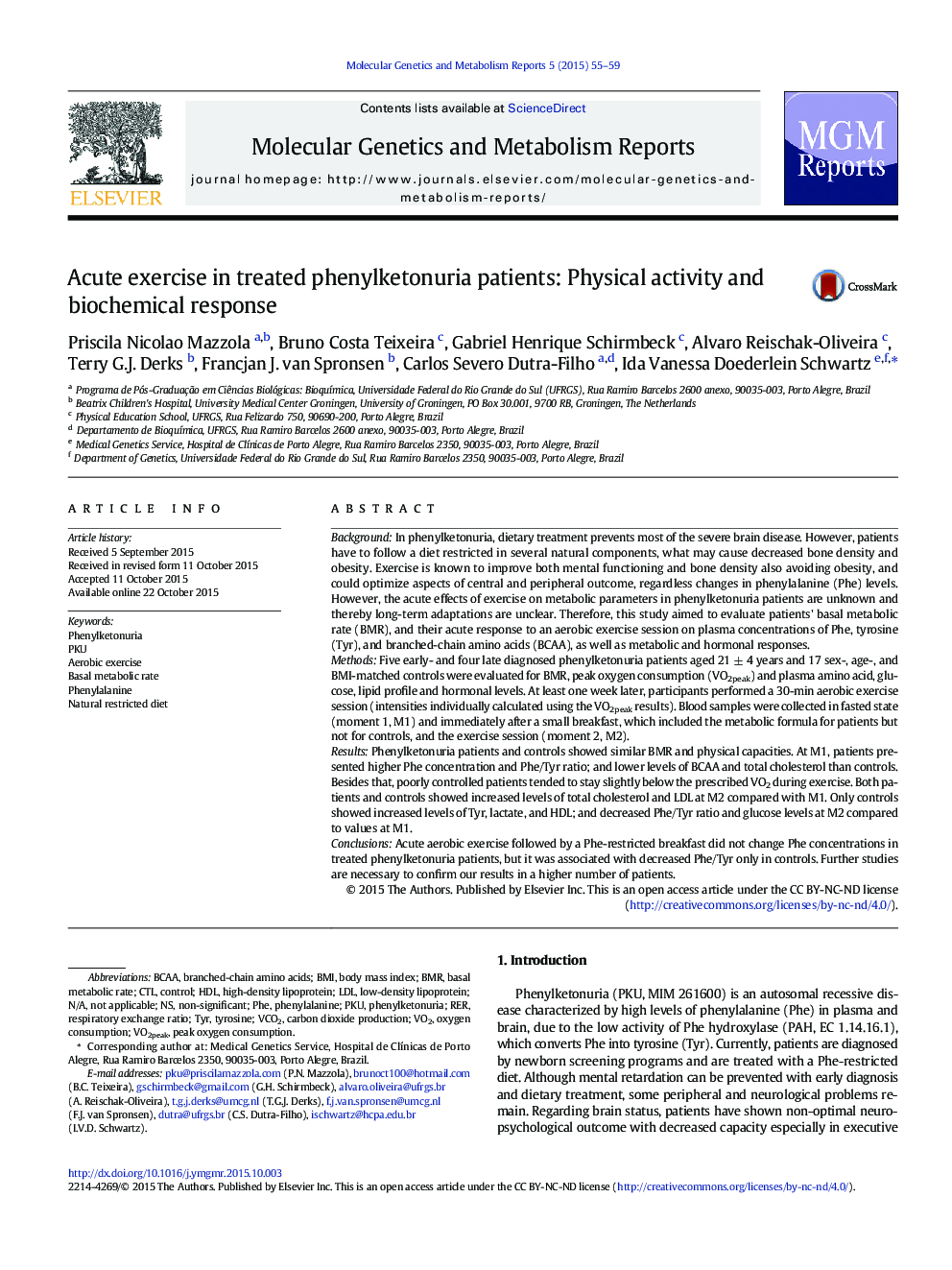| کد مقاله | کد نشریه | سال انتشار | مقاله انگلیسی | نسخه تمام متن |
|---|---|---|---|---|
| 2058988 | 1543981 | 2015 | 5 صفحه PDF | دانلود رایگان |
BackgroundIn phenylketonuria, dietary treatment prevents most of the severe brain disease. However, patients have to follow a diet restricted in several natural components, what may cause decreased bone density and obesity. Exercise is known to improve both mental functioning and bone density also avoiding obesity, and could optimize aspects of central and peripheral outcome, regardless changes in phenylalanine (Phe) levels. However, the acute effects of exercise on metabolic parameters in phenylketonuria patients are unknown and thereby long-term adaptations are unclear. Therefore, this study aimed to evaluate patients' basal metabolic rate (BMR), and their acute response to an aerobic exercise session on plasma concentrations of Phe, tyrosine (Tyr), and branched-chain amino acids (BCAA), as well as metabolic and hormonal responses.MethodsFive early- and four late diagnosed phenylketonuria patients aged 21 ± 4 years and 17 sex-, age-, and BMI-matched controls were evaluated for BMR, peak oxygen consumption (VO2peak) and plasma amino acid, glucose, lipid profile and hormonal levels. At least one week later, participants performed a 30-min aerobic exercise session (intensities individually calculated using the VO2peak results). Blood samples were collected in fasted state (moment 1, M1) and immediately after a small breakfast, which included the metabolic formula for patients but not for controls, and the exercise session (moment 2, M2).ResultsPhenylketonuria patients and controls showed similar BMR and physical capacities. At M1, patients presented higher Phe concentration and Phe/Tyr ratio; and lower levels of BCAA and total cholesterol than controls. Besides that, poorly controlled patients tended to stay slightly below the prescribed VO2 during exercise. Both patients and controls showed increased levels of total cholesterol and LDL at M2 compared with M1. Only controls showed increased levels of Tyr, lactate, and HDL; and decreased Phe/Tyr ratio and glucose levels at M2 compared to values at M1.ConclusionsAcute aerobic exercise followed by a Phe-restricted breakfast did not change Phe concentrations in treated phenylketonuria patients, but it was associated with decreased Phe/Tyr only in controls. Further studies are necessary to confirm our results in a higher number of patients.
Journal: Molecular Genetics and Metabolism Reports - Volume 5, December 2015, Pages 55–59
